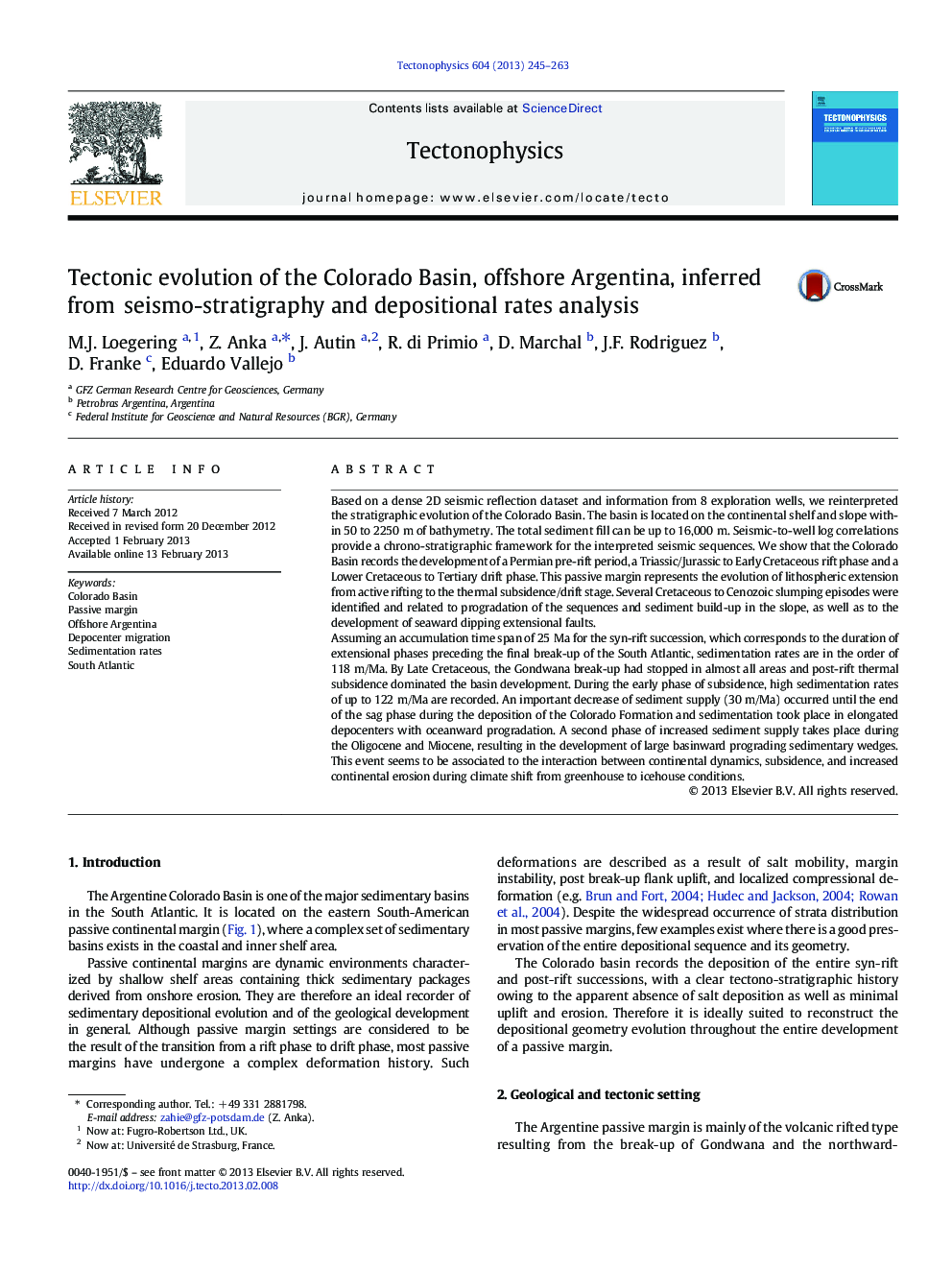| کد مقاله | کد نشریه | سال انتشار | مقاله انگلیسی | نسخه تمام متن |
|---|---|---|---|---|
| 4692162 | 1636783 | 2013 | 19 صفحه PDF | دانلود رایگان |

Based on a dense 2D seismic reflection dataset and information from 8 exploration wells, we reinterpreted the stratigraphic evolution of the Colorado Basin. The basin is located on the continental shelf and slope within 50 to 2250 m of bathymetry. The total sediment fill can be up to 16,000 m. Seismic-to-well log correlations provide a chrono-stratigraphic framework for the interpreted seismic sequences. We show that the Colorado Basin records the development of a Permian pre-rift period, a Triassic/Jurassic to Early Cretaceous rift phase and a Lower Cretaceous to Tertiary drift phase. This passive margin represents the evolution of lithospheric extension from active rifting to the thermal subsidence/drift stage. Several Cretaceous to Cenozoic slumping episodes were identified and related to progradation of the sequences and sediment build-up in the slope, as well as to the development of seaward dipping extensional faults.Assuming an accumulation time span of 25 Ma for the syn-rift succession, which corresponds to the duration of extensional phases preceding the final break-up of the South Atlantic, sedimentation rates are in the order of 118 m/Ma. By Late Cretaceous, the Gondwana break-up had stopped in almost all areas and post-rift thermal subsidence dominated the basin development. During the early phase of subsidence, high sedimentation rates of up to 122 m/Ma are recorded. An important decrease of sediment supply (30 m/Ma) occurred until the end of the sag phase during the deposition of the Colorado Formation and sedimentation took place in elongated depocenters with oceanward progradation. A second phase of increased sediment supply takes place during the Oligocene and Miocene, resulting in the development of large basinward prograding sedimentary wedges. This event seems to be associated to the interaction between continental dynamics, subsidence, and increased continental erosion during climate shift from greenhouse to icehouse conditions.
► Sedimentation rate record the evolution of the margin.
► Cretaceous–Cenozoic MTDs driven by slope sediment build-up & seaward-dipping faults
► Shelf progradation up to latest Cretaceous followed by aggradation until Oligocene
► Sediment supply increase during Oligo-Miocene caused basin-wide prograding wedges.
► South American uplift drives regression and low sedimentation rates during Eocene.
Journal: Tectonophysics - Volume 604, 24 September 2013, Pages 245–263